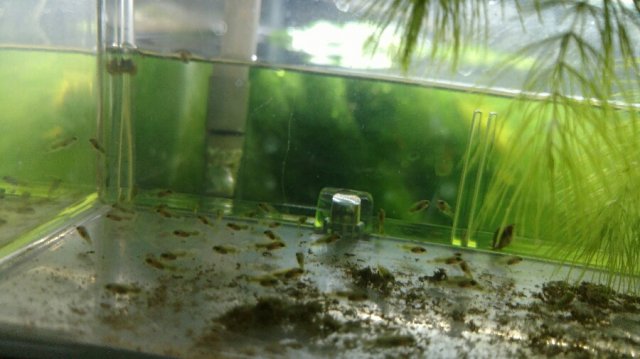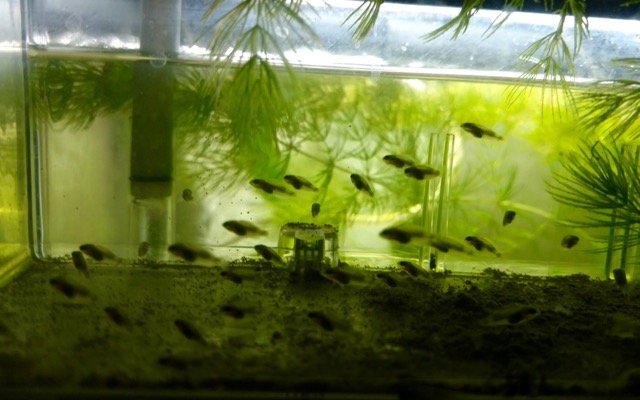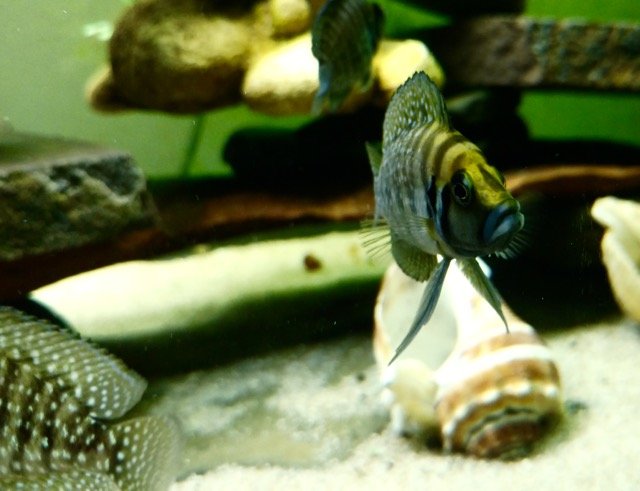I have a group of 7 Calvus that are between 2 -2.5 inches long and one in particular has been hiding in a shell and then hovering over the opening pretty much all the time. I knew this was possibly the result of a spawn, but didn't think that they would actually be spawning at this size. Just in case, I keep looking into the mouth of the shell and today I could see about a half dozen fry hanging out in the shell. At this point I've heard they are getting ready to leave the shell which with the other Calvus and the Xenotilapia in the tank means pretty certain doom.
So I'm wondering if anyone has had success rearing Calvus fry in a hang on breeder box. I have one of those large size marineland ones that cycles tank water in with an airpump, so they would still be getting tank water. My inclination is to put a little sand from the tank in the bottom of the breeder box and pick up the shell and try to pour them out into the breeder box. I guess I could do bare bottom in the breeder box, but I'd like to give them the sand to help them feel comfortable. I was also thinking of adding some hornwort as well. Good enough plan, or do I need to try to set up a small fry tank? I'm just afraid of keeping them healthy in a separate tank if it is just a few fry and I've heard they are susceptible to water changes killing them off and death from overfeeding if you don't do frequent water changes. I figure the breeder box has the benefit of concentrating them to make it easier to get them food and also using the water from the main tank.
The other thing is I'm way overdo on a water change on the tank anyway, so I'm a little worried about doing that now. Maybe if I use the breeder box I should just feed the fry and give the main tank a little fasting to try to keep the same water for another week and not shock the fry.
Any thoughts and experience is very welcome. I'd really like to keep these alive if I can.
So I'm wondering if anyone has had success rearing Calvus fry in a hang on breeder box. I have one of those large size marineland ones that cycles tank water in with an airpump, so they would still be getting tank water. My inclination is to put a little sand from the tank in the bottom of the breeder box and pick up the shell and try to pour them out into the breeder box. I guess I could do bare bottom in the breeder box, but I'd like to give them the sand to help them feel comfortable. I was also thinking of adding some hornwort as well. Good enough plan, or do I need to try to set up a small fry tank? I'm just afraid of keeping them healthy in a separate tank if it is just a few fry and I've heard they are susceptible to water changes killing them off and death from overfeeding if you don't do frequent water changes. I figure the breeder box has the benefit of concentrating them to make it easier to get them food and also using the water from the main tank.
The other thing is I'm way overdo on a water change on the tank anyway, so I'm a little worried about doing that now. Maybe if I use the breeder box I should just feed the fry and give the main tank a little fasting to try to keep the same water for another week and not shock the fry.
Any thoughts and experience is very welcome. I'd really like to keep these alive if I can.






